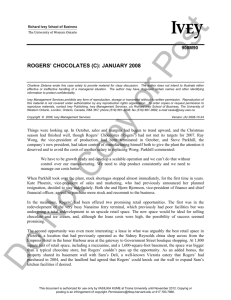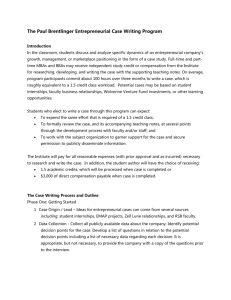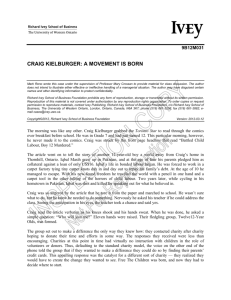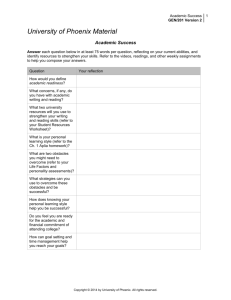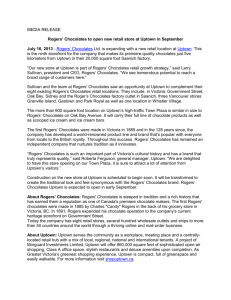rogers' chocolates (b): september 2007
advertisement
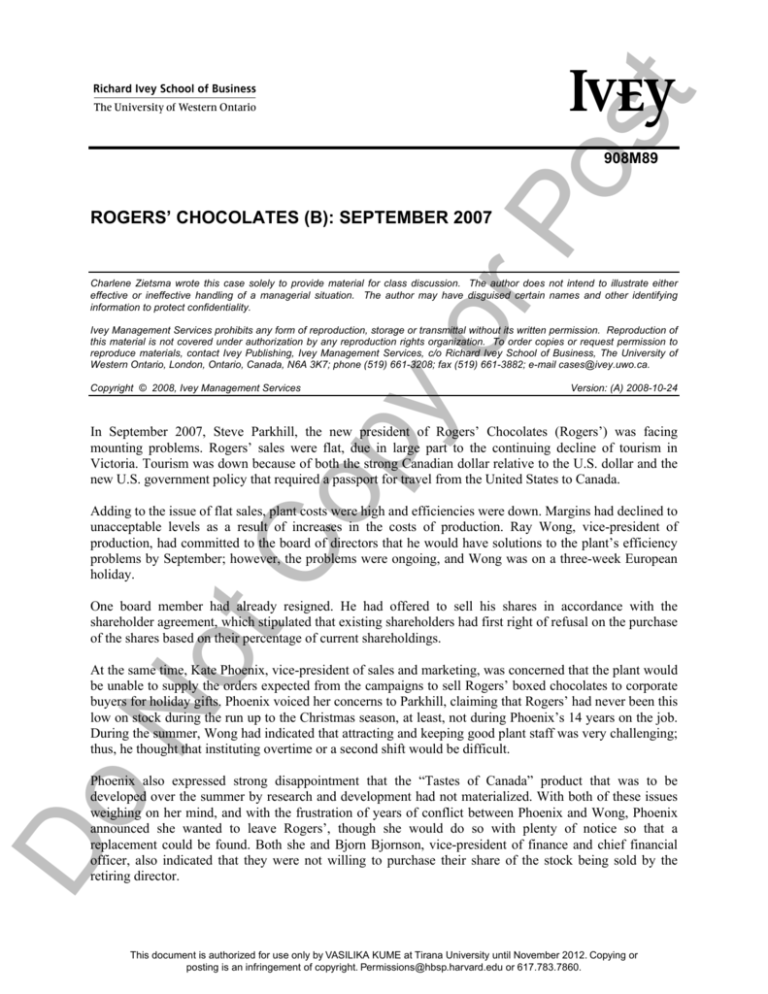
w rP os t S 908M89 ROGERS’ CHOCOLATES (B): SEPTEMBER 2007 op yo Charlene Zietsma wrote this case solely to provide material for class discussion. The author does not intend to illustrate either effective or ineffective handling of a managerial situation. The author may have disguised certain names and other identifying information to protect confidentiality. Ivey Management Services prohibits any form of reproduction, storage or transmittal without its written permission. Reproduction of this material is not covered under authorization by any reproduction rights organization. To order copies or request permission to reproduce materials, contact Ivey Publishing, Ivey Management Services, c/o Richard Ivey School of Business, The University of Western Ontario, London, Ontario, Canada, N6A 3K7; phone (519) 661-3208; fax (519) 661-3882; e-mail cases@ivey.uwo.ca. Copyright © 2008, Ivey Management Services Version: (A) 2008-10-24 In September 2007, Steve Parkhill, the new president of Rogers’ Chocolates (Rogers’) was facing mounting problems. Rogers’ sales were flat, due in large part to the continuing decline of tourism in Victoria. Tourism was down because of both the strong Canadian dollar relative to the U.S. dollar and the new U.S. government policy that required a passport for travel from the United States to Canada. tC Adding to the issue of flat sales, plant costs were high and efficiencies were down. Margins had declined to unacceptable levels as a result of increases in the costs of production. Ray Wong, vice-president of production, had committed to the board of directors that he would have solutions to the plant’s efficiency problems by September; however, the problems were ongoing, and Wong was on a three-week European holiday. No One board member had already resigned. He had offered to sell his shares in accordance with the shareholder agreement, which stipulated that existing shareholders had first right of refusal on the purchase of the shares based on their percentage of current shareholdings. At the same time, Kate Phoenix, vice-president of sales and marketing, was concerned that the plant would be unable to supply the orders expected from the campaigns to sell Rogers’ boxed chocolates to corporate buyers for holiday gifts. Phoenix voiced her concerns to Parkhill, claiming that Rogers’ had never been this low on stock during the run up to the Christmas season, at least, not during Phoenix’s 14 years on the job. During the summer, Wong had indicated that attracting and keeping good plant staff was very challenging; thus, he thought that instituting overtime or a second shift would be difficult. Do Phoenix also expressed strong disappointment that the “Tastes of Canada” product that was to be developed over the summer by research and development had not materialized. With both of these issues weighing on her mind, and with the frustration of years of conflict between Phoenix and Wong, Phoenix announced she wanted to leave Rogers’, though she would do so with plenty of notice so that a replacement could be found. Both she and Bjorn Bjornson, vice-president of finance and chief financial officer, also indicated that they were not willing to purchase their share of the stock being sold by the retiring director. This document is authorized for use only by VASILIKA KUME at Tirana University until November 2012. Copying or posting is an infringement of copyright. Permissions@hbsp.harvard.edu or 617.783.7860.
